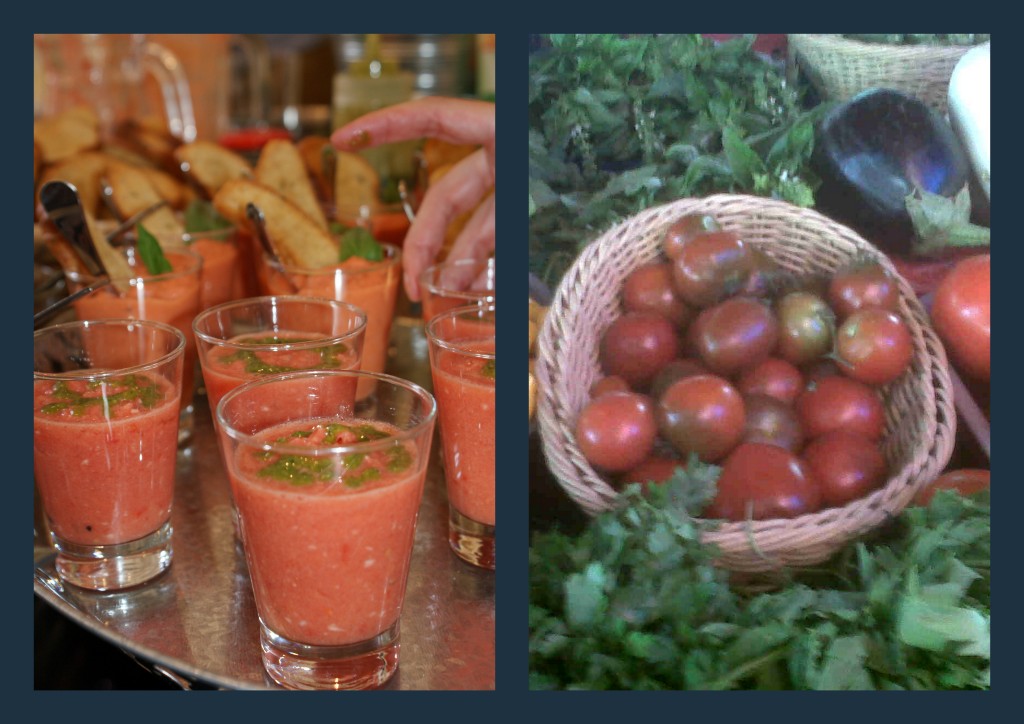a bittersweet kind of strawberry jam.
Strawberry jam to me has always been a bit insipid and uninspiring. The goodytooshoes of jams:the safe side of jams: the no risk option: the middle of the jam road. Time to stray over the tracks for this is the darker side of jam. A bitter twist from those whole limes.
So where were we with me and strawberry jam. Added to its oh so dull nature the sheer pernicketyness given its low pectin levels annoys me so there have been years when I just didn’t bother making it. But then I’ve been making strawberry & lime pannacottas …strawberry & lime smoothies…strawberry & lime cheesecakes and I didn’t get tired of this magical combination (which for one with a low boredom threshold is something). And so a marriage between a high pectin easy setting lime marmalade and classic strawberry jam seemed like a good idea. It was time to give strawberry time a second chance. And so here it is.
The method involves using boiled limes (to soften and extract pectin) as if making marmalade and this stage can be done in advance and you can even boil your citrus fruits up and freeze them ready for when the jam making bug seizes you. For it can strike at any inopportune moment.
Ingredients
- 225g limes
- 625 ml water
- sugar to weigh 2/3 what the lime water mix is after boiling. allow for approx 500g sugar
- 1.5 kg strawberries topped and tailed (approx before)
- 1.5kg sugar
please read:
How to
Prepare everything in advance (see rules). Clean jars ready and heating up in the oven you are ready to roll…
Part I The first part can be done in advance. Here you want the limes nicely softened down and all that pectin released. It depends what mood I am in…I made one batch where I roughly chopped them up and I made one where I had the patience to chop them into delicate slivers. Boil up the limes with the water. The rind should be really nice and soft – let them simmer gently for roughly an hour. Then weigh what you have and whatever you have, you want 2/3 of the weight as sugar. The limes do turn a bit greyish and lose a bit of their bright green look.
Part II The Strawberries.
Firstly, do use local strawberries not frou frou flown in strawberries. I like to buy big bags of them and I kind of like the slightly dirty squidgy sordid nature of the fermenting strawberry at the bottom of the bag experience you find down the piata here. So once the fruit has been purchased I chop my strawberries into pieces. It may seem a bit tedious but I want a jam not strawberry conserve. Then when you have the fruit weigh it as some will have been lost in hulling them discarding the rotten ones and of course eating a few. Now add an equal quantity of sugar.
Let the sugar dissolve. Its quite a good idea to leave it overnight. Like I said its all about the preparation.
Combine parts one and two in one big heavy bottomed pot
Now if you have not dissolved your sugar, place on a low heat until the sugar warms through and dissolves. Then put it on the max and let it boil and when I mean boil I mean boil.
Now follow the rules
This jam needed approx 30 minutes to reach setting point and it indeed set at 107C. However as I wanted to preserve colour and I am not obsessed about a rigid set more about bright colour and great taste its a soft set.
I like this jam with yoghurt in the morning and just a sprinkle of granola or drizzled over cheesecake….its definitely one for dairy products.








